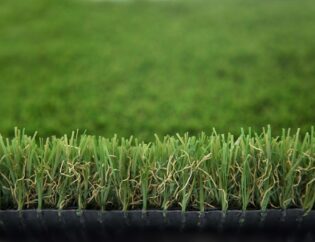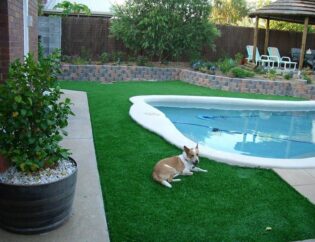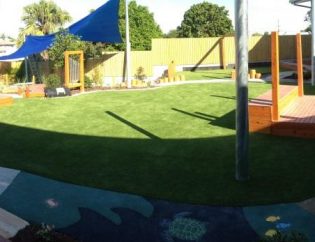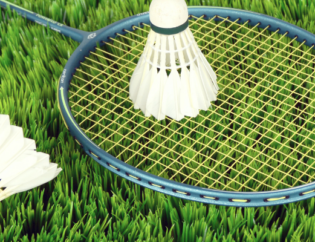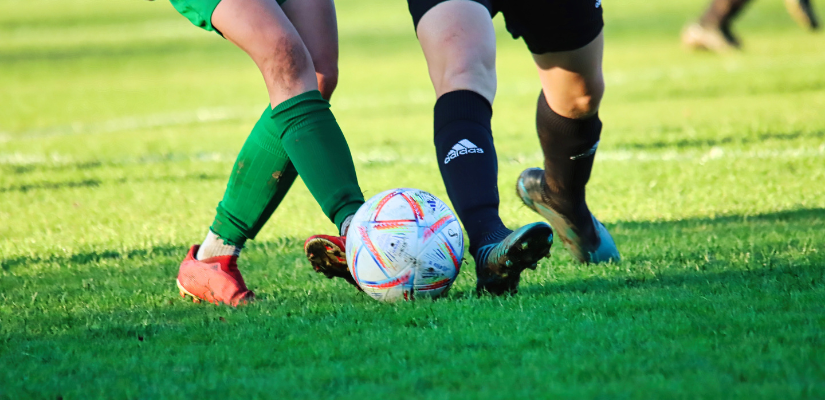
In this post, we’ll explore five key advantages of artificial turf for soccer fields, highlighting why more and more sports facilities are making the switch to fake turf.
Turf Green services the Brisbane area to bring the benefits of artificial turf to sports facilities, schools, and commercial spaces in our subtropical city and its outlying suburbs.
Is ‘Fake Grass’ the Right Choice for Today’s Soccer Fields?
1. Enhanced Durability
Artificial turf is renowned for its durability, capable of withstanding heavy foot traffic, intense gameplay, and various weather conditions. Unlike natural grass, which can become worn and uneven over time, artificial turf maintains its integrity and consistency throughout the season. The robust construction of artificial turf fibres ensures resilience against tearing, ripping, and fraying, providing soccer fields with a long-lasting playing surface that can endure rigorous use without compromising performance.
Additionally, artificial turf’s resistance to damage from cleats, spikes, and equipment makes it an ideal choice for high-traffic areas, ensuring that soccer fields remain in top condition for years to come.
In Brisbane, the warm climate poses challenges for natural grass, but artificial turf thrives in such conditions. Its robust construction ensures resilience against heat and storms, providing a durable surface that maintains performance.
2. Consistent Playing Surface
One of the most significant advantages of artificial turf for soccer fields is its consistent playing surface. Unlike natural grass, which can be affected by factors such as weather, irrigation, and maintenance practices, artificial turf offers uniformity and predictability in surface conditions. This consistency ensures that players can rely on the same level playing field for every game and practice, enhancing their ability to control the ball, make precise passes, and execute strategic maneuvers.
Artificial turf’s even texture and traction properties provide players with stability and confidence, reducing the risk of slips, trips, and falls during gameplay. This is a huge health and safety win, particularly for schools, where mitigating risk of injury is a major consideration.
3. All-Weather Performance
Artificial turf excels in all weather conditions, offering unparalleled performance and playability year-round. Unlike natural grass fields, which can become muddy, waterlogged, or frozen in inclement weather, artificial turf remains resilient and playable in rain, storms, or extreme temperatures. The advanced drainage systems integrated into artificial turf ensure rapid water runoff, preventing surface pooling and maintaining optimal playing conditions even during heavy rainfall. This all-weather performance enables soccer fields to be utilised consistently throughout the year, regardless of weather forecasts or seasonal changes.
In Brisbane particularly, sporadic rainfall requires soccer fields to withstand varying weather conditions. Artificial turf’s drainage systems enable rapid water runoff, ensuring playable conditions even after heavy rainfall or storms, making it a reliable choice for our unpredictable weather.
4. Low Maintenance Requirements
Maintaining a natural grass soccer field can be a time-consuming and labour-intensive task, requiring frequent mowing, watering, fertilising, and pest control. Artificial turf eliminates the need for such extensive maintenance practices, offering a low-maintenance alternative that saves time, resources, and labour costs. With artificial turf, soccer field managers can say goodbye to mowing schedules, irrigation systems, and chemical treatments, freeing up valuable time and resources for other facility priorities. Routine maintenance for artificial turf typically involves simple tasks such as regular grooming, debris removal, and occasional sanitisation, ensuring that soccer fields remain clean, safe, and playable with minimal effort.
5. Environmental Sustainability
Artificial turf offers significant environmental benefits compared to natural grass fields, making it a sustainable choice for soccer facilities. By reducing water consumption, eliminating the need for pesticides and fertilisers, and minimising maintenance-related emissions, artificial turf helps conserve natural resources and reduce environmental impact. Additionally, many artificial turf products are made from recycled materials and can be recycled at the end of their lifespan, further contributing to sustainability efforts.
By choosing artificial turf for soccer fields, sports facilities can demonstrate their commitment to environmental responsibility and contribute to a greener, more sustainable future. This can be a major selling point to potential clients and customers, such as sports facilities looking to bring in new players, or schools wishing to attract new students.
Artificial turf offers a multitude of benefits that make it an ideal choice for soccer fields. From enhanced durability and consistent playing surfaces to all-weather performance and low maintenance requirements, artificial turf provides soccer players and facilities with a superior playing experience that maximises performance, safety, and sustainability.
As more sports facilities recognise the advantages of synthetic grass, the popularity of fake turf continues to grow, shaping the future of soccer and sports in Queensland and worldwide.
Ready to transform your soccer field with artificial turf? Contact Turf Green today to learn more about our high-quality artificial turf solutions and take your soccer facility to the next level!




